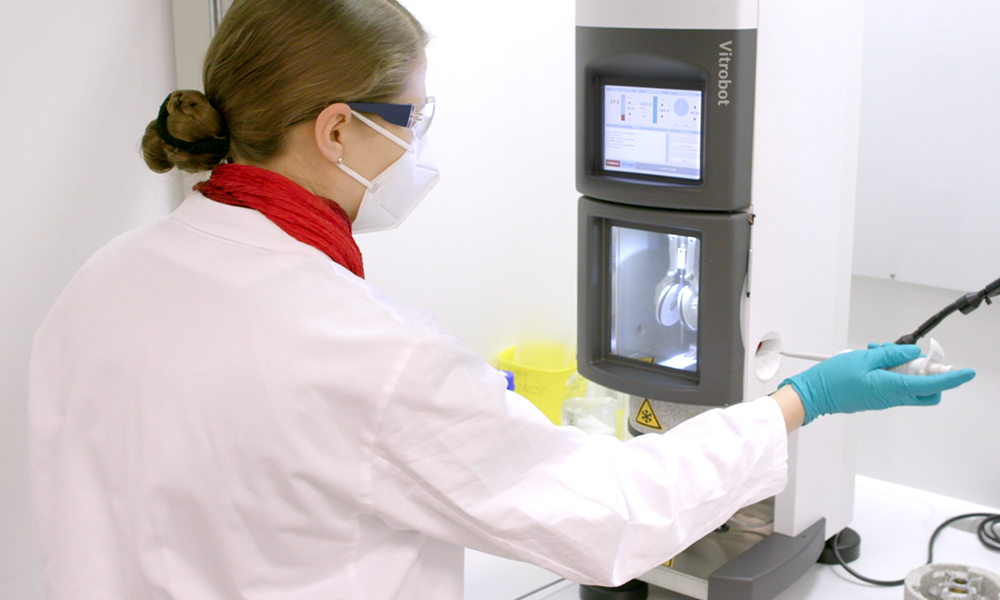
Read the latest Issue
Collaboration with the Cryo-Electron Microscopy Service Platform enabled external users to better understand coat protein complexes

Coat proteins play a key role in the packaging and distribution of proteins within our cells. Studying how these proteins work helps to understand their role in health and disease. Defects in a coat protein complex known as COPII can lead to pathologies related to collagen secretion and lipid metabolism disorders.
Giulia Zanetti, a group leader at the Institute of Structural and Molecular Biology (ISMB) in London, studies the COPII coat protein complex. Her lab is based at Birkbeck College and uses cryo-electron microscopy (cryo-EM) and cryo-electron tomography to understand coat proteins.
“We wanted to use cryo-electron tomography, and at the time, this technique was not so widely used,” Zanetti recalled. “The EMBL Cryo-EM Service Platform is well established and well known to produce first class data, and that’s why we chose to collect data at EMBL.”
“The Cryo-EM Service Platform offers services for cryo-electron microscopy, especially data collection for single particle analysis and cryo-electron tomography,” said Simone Mattei, the EMBL Team Leader in charge of the service platform. “Our team includes members of various backgrounds, including microscopy engineers, application specialists, and image analysts.”
Zanetti and her team came to EMBL Heidelberg to use cryo-electron tomography to determine the structure of the assembled COPII coat complex. “Our visit was very successful,” said Zanetti. “We have collected a dataset that allowed us to determine the structure of one of the two layers of the COPII coat on membranes.”
The visit to Heidelberg not only helped the researchers to advance their specific project, Zanetti added. “Our interaction with the EMBL Cryo-EM Service Platform has definitely improved the way we collect data. We are now using the protocols that we have learned from EMBL here at Birkbeck, which is benefiting not only my group, but also many other colleagues.”
From this year, the imaging services offered by the Cryo-EM Service Platform will be included in the portfolio of the new EMBL Imaging Centre. “The EMBL Imaging Centre is a new project that builds upon the success of the Cryo-EM Service Platform,” said Mattei. “It’s a new concept of imaging facility that will host two teams: one for light microscopy and one for electron microscopy. The Imaging Centre will broaden the services offered to our users, including sample preparation for cryo-EM, image processing and analysis.”
Find out more about EMBL’s Scientific and Data Services here.
Looking for past print editions of EMBLetc.? Browse our archive, going back 20 years.
EMBLetc. archive